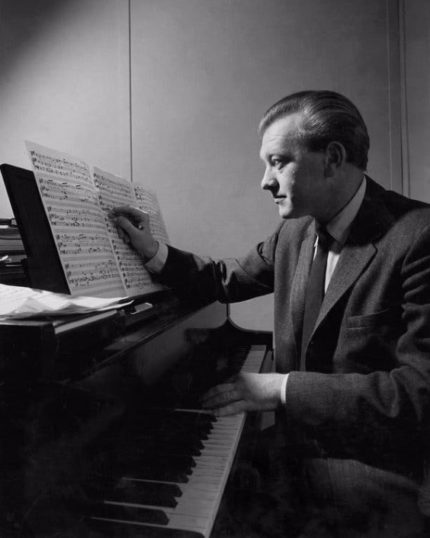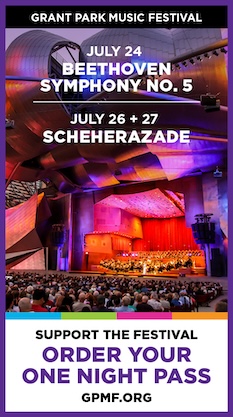The Chicago Ensemble serves up a varied menu from Beethoven to Hindemith

In the second program of its 45th season, The Chicago Ensemble presented a varied program of music by Hindemith, Beethoven, Karel Husa, and Bruch Tuesday night.
Possessing a wealth of knowledge, artistic director and pianist Gerald Rizzer gave in-depth introductions to each piece, providing helpful historical context and interesting tidbits, though perhaps these notes could have been more succinct, as the program was already quite lengthy.
The concert began with a short Duet for viola and cello by Paul Hindemith, which he apparently wrote in three hours to fill the last few minutes of a 78-rpm record. Violist Sixto Franco and cellist Melissa Bach were incisive in their playing, though a drier acoustic than the spacious Buchanan Chapel at Fourth Presbyterian Church might have made the dissonances more easily discernable. Nevertheless, the piece was an interesting find, as is characteristic of The Chicago Ensemble’s programming.
Beethoven’s rarely heard Trio in E flat Major, Op. 38 for clarinet, cello, and piano is the composer’s transcription of his more frequently played Septet. This mammoth six-movement work was quite an undertaking, especially for Rizzer, to whom the lion’s share of the work understandably falls in this transcription, as the pianist must account for four missing instruments.
After a slightly tentative start to the opening Adagio, the trio soon found its footing and connection to each other, though playing between the pianist and the other two instrumentalists could have been more closely knit at times.
Rizzer’s clean and slightly detached playing was stylistically appropriate and helped to keep the details audible in the swimmy room. He impressed with highly musical and delicate playing, especially in the Tema con variazioni, where he often had the task of introducing the variations. Though the fiendish runs in the Scherzo posed somewhat of a challenge, he brought admirable warmth to the Trio, and his cadenza in the Presto was a moment of unmatched expressivity. Even so, he could have afforded to be more indulgent at times, often fading into the background when he should have had a more soloistic role equal to that of the cello and clarinet.
Clarinetist Elizandro Garcia-Montoya and cellist Melissa Bach were compatible trio partners, sensitive to each other’s needs and coming in and out of the texture when appropriate. Garcia-Montoya brought a sublime soft tone to the opening melody of the Adagio cantabile, lending it a vocal quality. He also demonstrated impressive control on sustained pianissimo notes while accompanying Bach as she took up the melody in this movement. The most physically expressive and communicative of the three, Bach was generous in her playing throughout, though her intonation fitfully suffered in the upper register.
Czech-American composer Karel Husa’s trio for clarinet, viola, and cello, titled Évocations de Slovaquie, was heard on the second half. Inspired by Bartók’s use of Hungarian folk idioms, this piece was similarly based on Czech folk songs, though these folk elements were heavily cloaked in 20th-century dissonances.
The most intriguing movement of the three-movement piece was “La Nuit,” which opens with a melancholy unaccompanied viola solo played senza vibrato. Franco’s playing here was intimate and controlled, which Bach soon matched when she entered in parallel open intervals. This lent the movement an unexpected medieval tonality that both contrasted with and fed into the surrounding modern dissonances. The final movement, “La danse,” was heavily rhythmically accented and featured high-flying acrobatics from Garcia-Montoya on clarinet.
Rounding out the program were four pieces for clarinet, viola, and piano from Max Bruch’s Selected Pieces, Op. 83. The richness of the romantic sonorities was almost overwhelming after the previous selections. Franco gave a highly affecting solo at the beginning of the first piece, No. 5 “Rumänische Melodie.” Franco was perhaps the most emotive player of the evening, playing these Bruch pieces with passion and a meaty tone, though sometimes this ardor impeded his intonation and limited expressive nuance.
Garcia-Montoya was a nice foil for Franco’s impassioned playing, offering more tenderness and control, while Rizzer provided a warm bed of pianistic sound in the dense romantic accompaniments. Consistently a sensitive collaborator, Rizzer could have been more demonstrative and soloistic when the music called for it, though we got a glimpse of it in the final piece, No. 8 “Moderato,” when he allowed himself to come out of the texture more.
The Chicago Ensemble’s next program on April 24 and 26 will feature works by Nino Rota, Alban Berg, Mozart, Copland, Aaron Spotts, and Robert Schumann. thechicagoensemble.org
Posted in Performances
